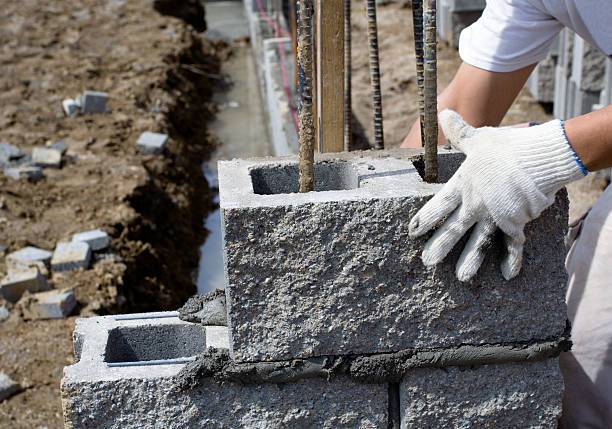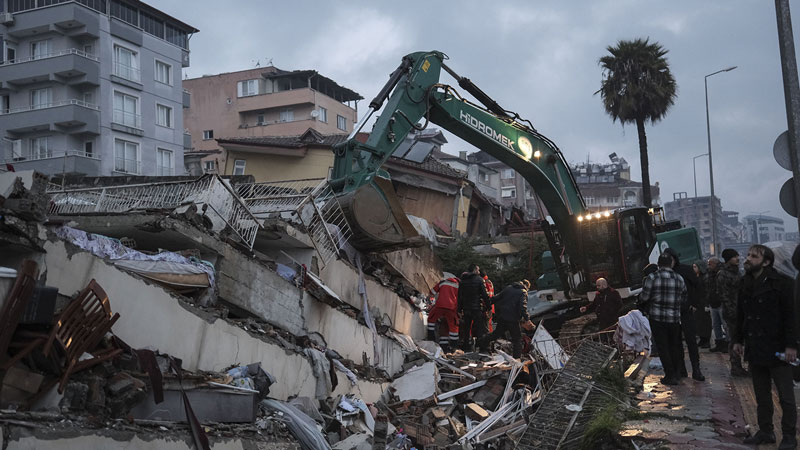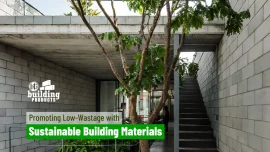Elevate Your Space with Concrete Hollow Blocks
In the ever-evolving world of interior and exterior design, one trend that continues to stand the test of time is the use of concrete hollow blocks. These unassuming building materials are a trendy staple in the world of architecture and design, offering a unique blend of aesthetics and functionality. Whether you’re planning a full-scale renovation or a small-scale DIY project, concrete hollow blocks can be the game-changer your space needs.
Industrial Chic
Concrete hollow blocks have a distinct industrial appeal that’s hard to replicate with other materials. Their raw and minimalist look pairs perfectly with modern and industrial interior design. These blocks add an urban edge to any space, creating an atmosphere that’s both chic and contemporary. For an on-trend twist, consider using them to build a feature wall in your living room or bedroom.
Sustainable Solution
Sustainability is more than just a buzzword; it’s a lifestyle. Concrete hollow blocks are an eco-friendly option. They are made from readily available materials and are highly durable, reducing the need for frequent replacements. If you’re striving for an environmentally conscious home, incorporating these blocks into your design is a step in the right direction.
Versatile Design Options
One of the main draws of concrete hollow blocks is their versatility. They come in various shapes and sizes, making them ideal for both interior and exterior projects. From planters and seating to room dividers and accent walls, the possibilities are endless. Combine different block sizes and colors to create eye-catching patterns and designs that reflect your unique style.
DIY-Friendly
Concrete hollow blocks are perfect for those with a creative streak. They are relatively easy to work with, even for beginners. With the right tools and some inspiration, you can embark on a DIY project to transform your space. Start with small items like planters and work your way up to larger-scale projects as you gain confidence.
Practical and Durable
Beyond their aesthetic appeal, concrete hollow blocks are incredibly practical and durable. They can withstand the elements when used outdoors and can serve as strong structural components in construction. Their durability ensures your investment will last for years to come, making them a smart choice for homeowners looking for long-term value.
Unleash Your Artistic Side
If you’ve always wanted to dabble in painting or art, concrete hollow blocks provide a unique canvas. Get creative by painting or staining them in various colors and patterns. These blocks can be transformed into functional pieces of art or outdoor decorations that add a personalized touch to your home.
Affordability Meets Style
When it comes to cost-effectiveness, concrete hollow blocks are hard to beat. They are a budget-friendly choice for both professional builders and DIY enthusiasts. You can achieve a high-end look without breaking the bank, making them a trendy and practical choice for all types of projects.
Low Maintenance
Maintaining concrete hollow blocks is a breeze. Their solid construction and low porosity make them resistant to moisture, mold, and pests. A simple wipe-down or occasional pressure wash is all it takes to keep them looking fresh and appealing.
The Beauty of Texture
Concrete hollow blocks introduce texture into your space, which adds depth and character to your design. The inherent texture of the blocks can be highlighted or muted, depending on your design preferences. The interplay of light and shadows on the textured surface can create a stunning visual impact.
Complement with Other Materials
Don’t be afraid to mix and match. Concrete hollow blocks can be seamlessly integrated with other materials like wood, glass, or metal. The contrast of these elements can make your design even more visually appealing and on-trend.
Concrete hollow blocks offer a trendy and versatile solution for those looking to enhance their spaces. These blocks have much to offer. So, why not explore the possibilities and incorporate concrete hollow blocks into your next design project? Whether you’re aiming for a complete overhaul or just a subtle transformation, these blocks can be the key to elevating your space to new heights of style and functionality.




































